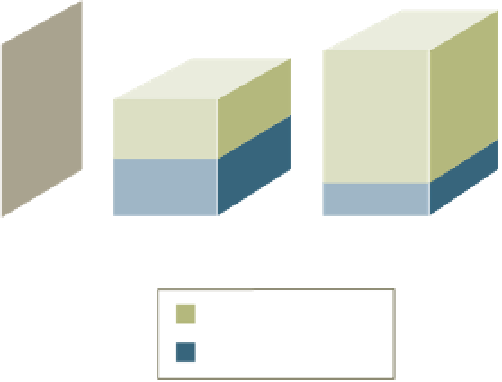Information Technology Reference
In-Depth Information
Figure 13.13
The Value of Investment in
Design
$250,000
200,000
150,000
100,000
50,000
0
Good
design
Poor
design
Maintenance cost
Design cost
Systems review
, the final step of systems development, is the process of analyzing systems
to make sure that they are operating as intended. This process often compares the perfor-
mance and benefits of the system as it was designed with the actual performance and benefits
of the system in operation. In some cases, a formal audit of the application can be performed,
velopment, resulting in halting the new systems while they are being built because of
was almost $170 million over budget. As a result, work on the application that serves about
37,000 workers was halted so the entire project could be reviewed in detail.
Problems and opportunities uncovered during systems review trigger systems develop-
ment and begin the process anew. For example, as the number of users of an interactive
system increases, it is not unusual for system response time to increase. If the increase in
response time is too great, it might be necessary to redesign some of the system, modify
databases, or increase the power of the computer hardware.
Internal employees, external consultants, or both can perform systems review. When the
problems or opportunities are industry-wide, people from several firms can get together. In
some cases, they collaborate at an IS conference or in a private meeting involving several
firms.
systems review
The final step of systems
development, involving the analysis
of systems to make sure that they
are operating as intended.
Types of Review Procedures
The two types of review procedures are event-driven and time-driven (see Table 13.5). An
event-driven review
is triggered by a problem or opportunity such as an error, a corporate
merger, or a new market for products. In one case, a large insurance company operating in
Louisiana was ordered by a Louisiana court to pay a client over $500,000 in wind damages
an event-driven review that resulted in new software claims programs.
event-driven review
A review triggered by a problem or
opportunity such as an error, a
corporate merger, or a new market
for products.
Table 13.5
Event Driven
Time Driven
Examples of Review Types
Problem with an existing system
Monthly review
Merger
Yearly review
New accounting system
Executive decision that an
upgraded Internet site is needed
to stay competitive
Review every few years
Five-year review











